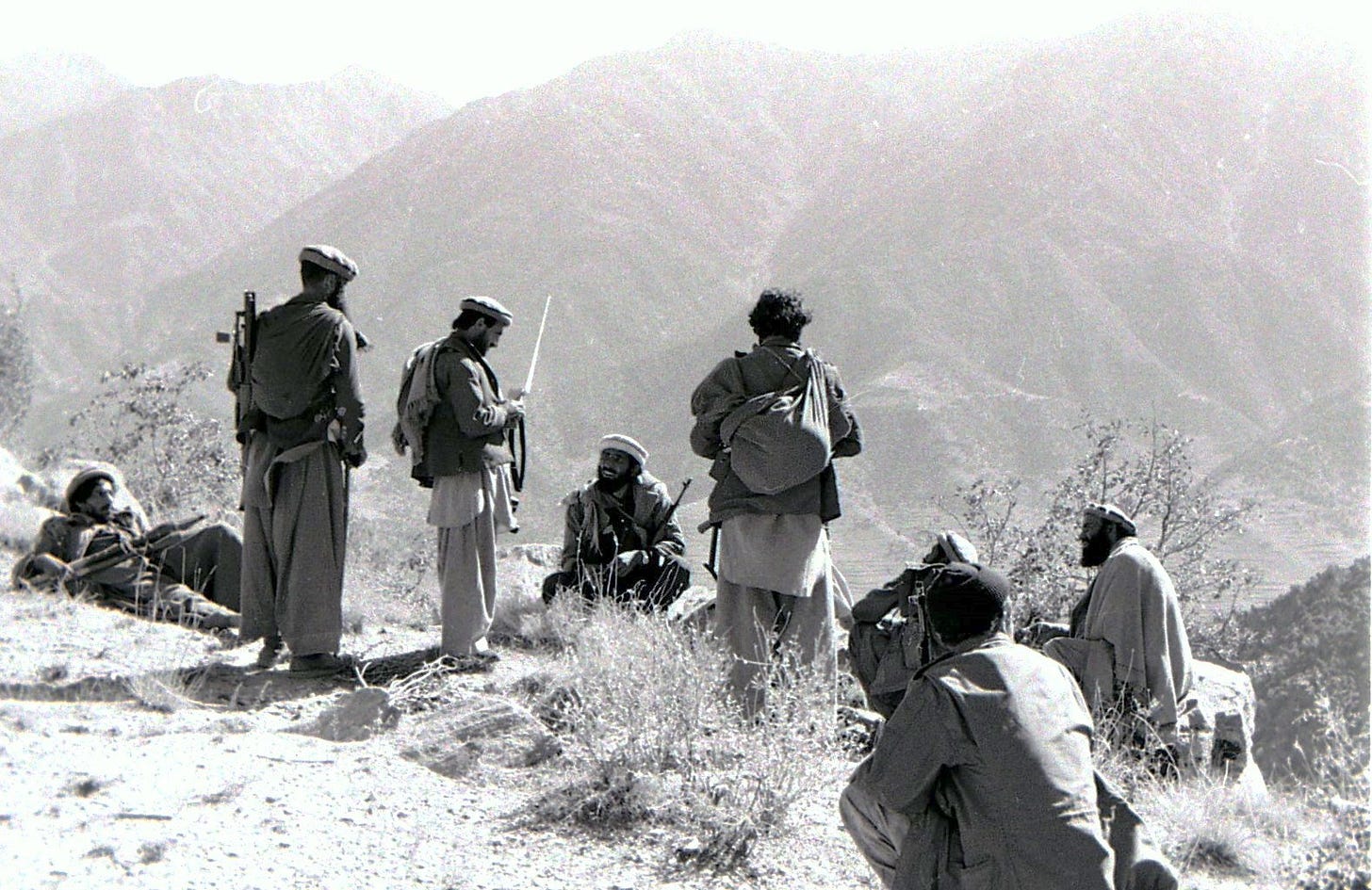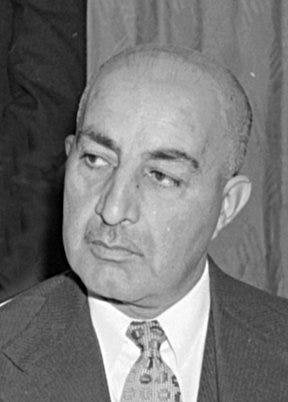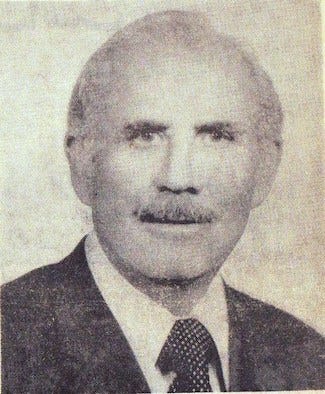Today in Central Asian history: the Soviets invade Afghanistan (1979)
Afghanistan has been at war pretty much ever since.
If you’re interested in history and foreign affairs, Foreign Exchanges is the newsletter for you! Sign up for free today for regular updates on international news and US foreign policy, delivered straight to your email inbox, or subscribe and unlock the full FX experience:
For a while Americans mostly viewed the Soviet-Afghan War positively, as the Beginning Of The End for the Soviet Union, and while there may still be something to that, I imagine most of us think of it a bit differently nowadays. The plucky Mujahideen who earned America's support and admiration for their brave fight against the Communist Menace eventually became—well, some of them became—al-Qaeda and the Taliban, and some time after that we stopped supporting and admiring them.
There's no way to cover the entire nine year-long Soviet-Afghan War in a reasonable-length blog post, so today we’ll focus on what led up to Moscow’s decision to invade its small southern neighbor and set the whole thing (a whole lot of things, as it turned out) in motion. The first thing we should note is that I’m fudging a little on the date. Technically it would probably be more accurate to say that the invasion began on December 24, when the first Soviet troops started arriving in Kabul, or at least on December 25, when more Soviet forces crossed the border between Afghanistan and Turkmenistan. But it was on December 27 when those forces actually seized control of major government buildings across the capital, making it clear that their intention was to take over, not just offer support. That’s when the war really started, that’s the date I’m highlighting.
How did it come to this? As we’ve discussed in other historical posts, Afghanistan played the role of frontier in the “Great Game,” the Russian-British competition for control of Asia that lasted most of the 19th century. This meant that it was already in the Russian orbit long before 1979. The Russian Empire came to an end in the 20th century, but its interest in Afghanistan carried over to the Soviet Union.
During the 1960s and 1970s, Moscow cultivated the People’s Democratic Party of Afghanistan (PDPA), a Marxist movement opposed to Afghan King Mohammed Zahir Shah (d. 2007). The Soviets were pretty pleased when the PDPA colluded with the country’s former prime minister (and Zahir Shah's cousin), Mohammed Daoud Khan (d. 1978), to overthrow Zahir Shah and establish a republic in 1973. We should note, however—because we'll be coming back to it—that in the late 1960s the PDPA began to splinter internally into several factions, the two largest of which were the Parcham, led by Babrak Karmal (d. 1996) and the Khalq, led by Nur Muhammad Taraki (d. 1979) and Hafizullah Amin (d. 1979). Khalq was the more radical of the two and pushed for a Soviet-style revolution, while Parcham supported a slower move toward socialism.
Mohammed Daoud Khan, now President Daoud if you please, was no Marxist. I don’t even think he was much of a socialist. He did his best to repress the PDPA and had a touchy relationship with the Soviets, whom he accused (probably with good reason) of meddling in Afghan politics by working to reconcile the factions within the PDPA. The Soviets, for their part, didn’t care for Daoud’s moves toward improving relations with the West and with the West’s allies in the Muslim World (i.e., Saudi Arabia and Egypt). To be clear, despite their issues with Daoud there’s no indication the Soviets wanted him removed, which would’ve upset a pretty comfortable relationship with a reliably neutral state right on the USSR’s southern border. But Daoud—not socialist enough for the socialists, too secular for religious types, and extremely dictatorial—wound up alienating pretty much everybody within Afghanistan. This included his army, which had a growing Marxist orientation within its officer corps thanks to their Soviet training. So you can see where this is heading.
A PDPA leader named Mir Akbar Khyber was killed on April 17, 1978, and Taraki immediately accused Daoud’s secret police, though interestingly some members of Parcham said that Khyber may have been killed by Taraki’s Khalq rival, Amin. The identity of the assassin isn’t all that important. What is important is that a whole lot of Afghans believed Taraki and they began protesting. Daoud ordered a crackdown, but his position very quickly became untenable and he was executed by opposition fighters in the early morning hours of April 28. The PDPA now controlled Afghanistan, and Taraki was named president and prime minister with Amin serving as deputy PM. This event is known as the Saur Revolution, because it took place during the second month of the Iranian year, which in Dari (the Persian dialect spoken in much of Afghanistan) is called Saur.
Taraki's government took a few months to collect itself, then set about angering as many people as it could in as short a time as possible. It announced economic reforms that were incongruous with most people’s conceptions of Islamic law and were out of step with Afghan tradition. It announced plans to protect women’s and minority rights—a fine idea in principle, but aggravating to religious fundamentalists. It changed the flag from the traditional Islamic color green to red. And it purged Parcham members from the party. In short, if you were an Islamist or a social conservative or a moderate socialist or a landowner, Taraki gave you reason to be angry. That covers a lot of ground. And people began to revolt en masse. The army, whose support had been essential to the PDPA takeover, collectively said “uh, we didn't sign on for this” and abandoned Taraki. Eventually, in September 1979, Amin abandoned Taraki too, and had the president executed.
All through this period, Soviet support for the PDPA government was pretty unwavering, but they could see the writing on the wall. Amin’s attempt to salvage the situation by overthrowing Taraki failed, and it became clear that Amin was in over his head. Moscow prepared to intervene and began deploying forces along the border in Turkmenistan. The primary justification for the intervention was the Brezhnev Doctrine, which obliged the Soviets to come to the aid of distressed Communist governments wherever they might be, but there were other reasons as well. For one thing, Washington had already started sending small arms to the Afghan rebels, so the Cold War implications were obvious. For another, the Soviets were as worried about the Islamic Revolution in Iran as anybody else, and they figured that if they were going to have to confront a spreading revolutionary Islam that it would be better to do so in Afghanistan than within their own borders. Moscow decided to Fight Them Over There so it wouldn’t have to Fight Them At Home, or something like that.
The Soviets began moving troops into the country, assuring Amin that they were there for his benefit and protection. They struck on December 27, taking over government and media buildings in Kabul and seizing the presidential palace. The Soviets executed Amin and engineered the takeover of Babrak Karmal and the Parcham faction, thinking that this would be enough to pacify the rebels and restore stability to the country. This thinking turned out to be fairly...oh, let’s say “misguided.” Instead, the Soviet invasion united a disparate opposition. Peasants and landowners, secular leftists and Islamists, Pashtuns and Tajiks and Uzbeks, all put aside their own problems with one another and adopted one overarching goal: to kick the Soviets out of the country. It took a bit over nine years and considerable foreign help, but eventually they did just that.




